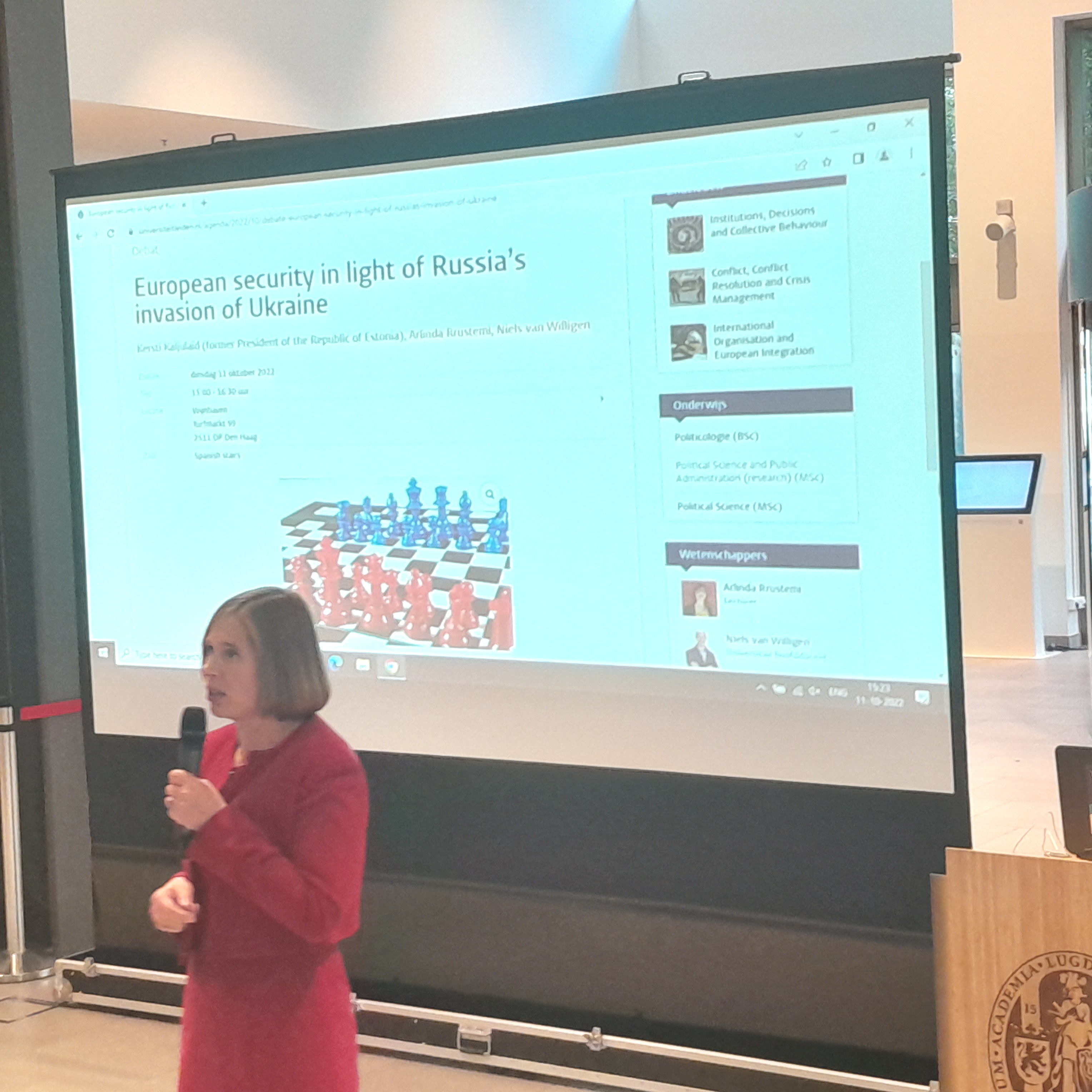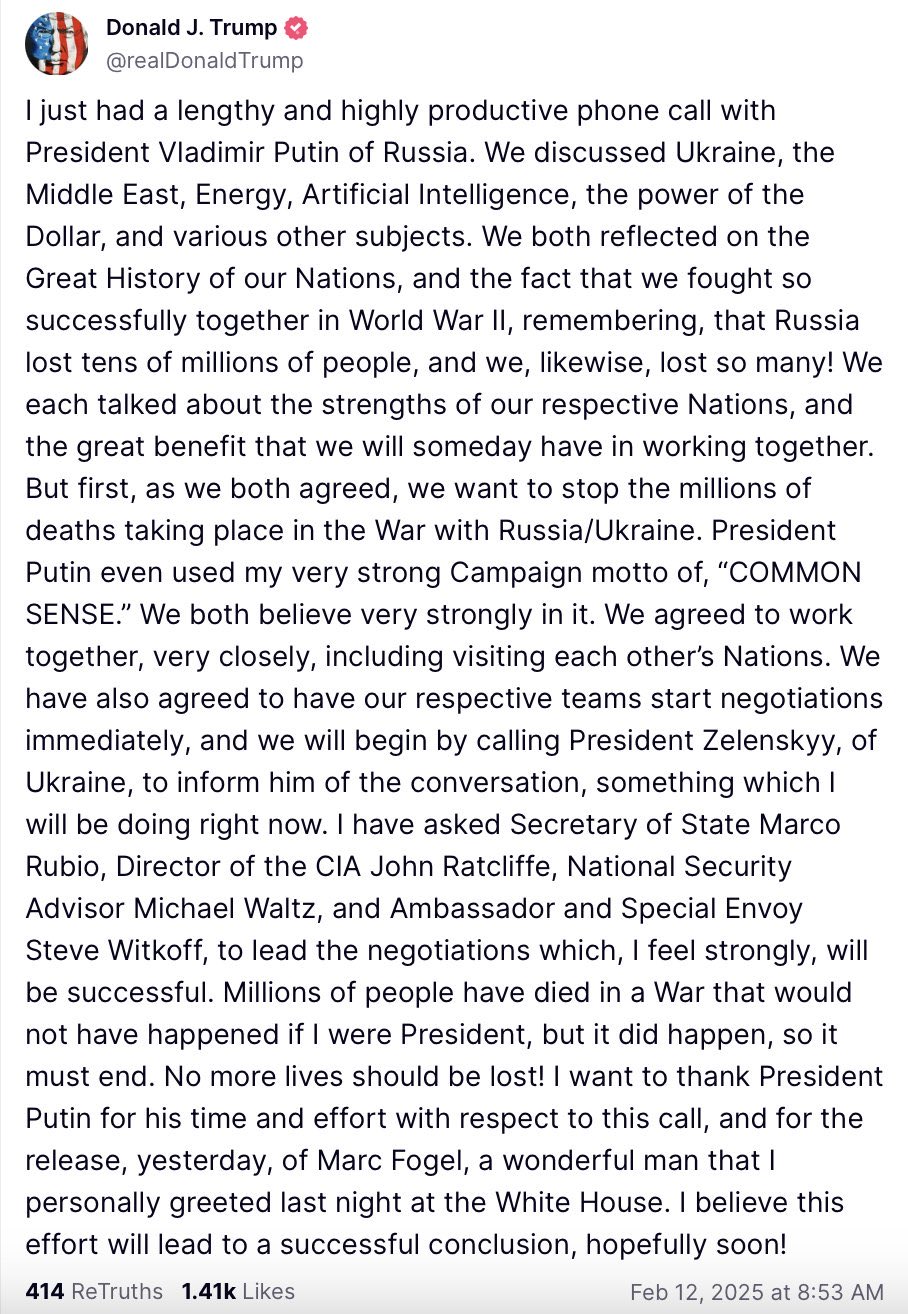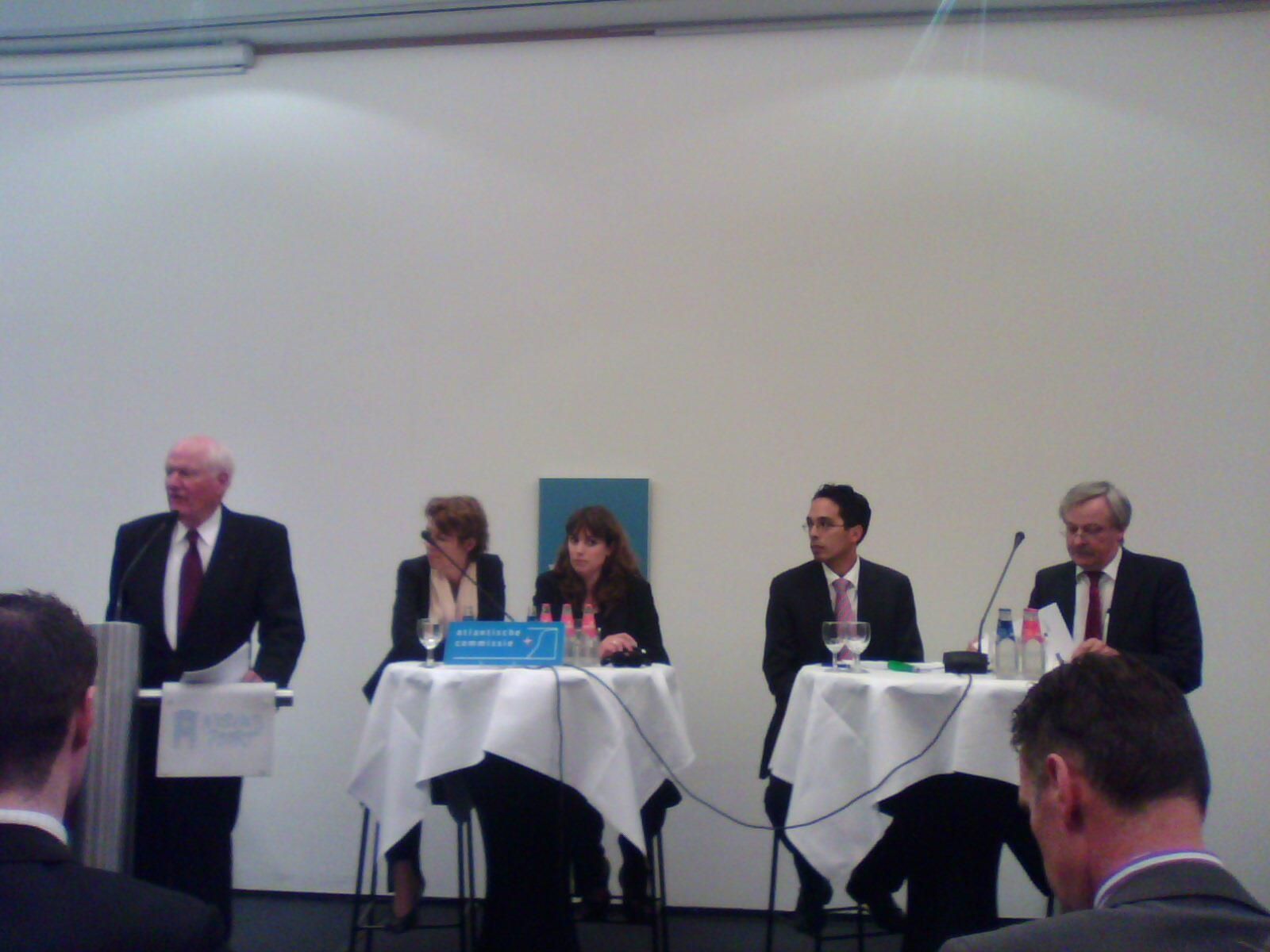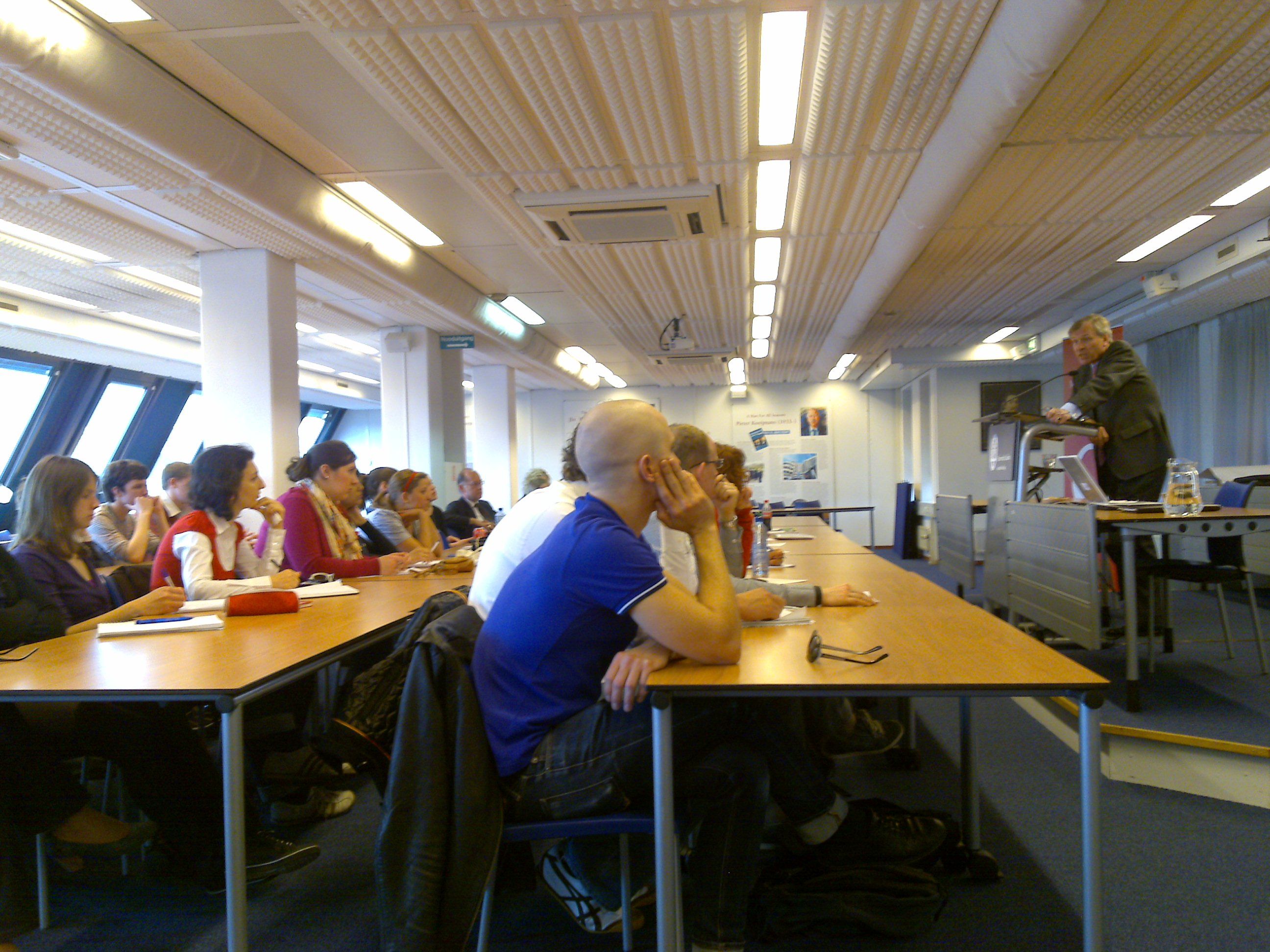
COMMON SECURITY and DEFENCE POLICY (CSDP) |
| __________________________________________________________________________________________________________________________________________________________________________ |
| UNITED STATES HOUSE ARMED SERVICES COMMITTEE STATEMENT OF GENERAL CHRISTOPHER G. CAVOLI, UNITED STATES ARMY UNITED STATES EUROPEAN COMMAND 10 April 2024 |
| Terrorism |
|
 |
| prelude to peace proposal ukraine |
Secretary of Defense Pete Hegseth at Ukraine Defense Contact Group Feb. 12, 2025, Brussels, Belgium \ Highlights:
|
 |
|
|
|
| Common Foreign and Security Policy |
| The military of the European Union today comprises the several national armed forces of the Union's 27 member states, as the policy area of defence has remained primarily the domain of nation states. European integration has however been deepened in this field in recent years, with the framing of a Common Security and Defence Policy (CSDP) branch for the Union's Common Foreign and Security Policy (CFSP) as well as the creation of separate international forces revolving around the EU's defence. A number of CSDP military operations have been deployed in recent years. |
| Common Security and Defence Policy |
To better protect its citizens and defend its values, the EU needs to take strategic action on defence and increase its capacity to act autonomously. EU security and defence policy is guided by the Common Foreign and Security Policy (CFSP) and the Common Security and Defence Policy (CSDP), as well as a series of complementary strategies and tools, including diplomacy, humanitarian aid, development cooperation, climate action, human rights, economic support, trade policy.
"Four steps towards a European Defence Union" (CEPS March 2020): Testing the EU’s level of ambition will surely be ongoing Multiannual Financial Framework (MFF) negotiations on the size and scope of European Defence Fund (EDF), possible inertia in the implementation of PESCO projects, tensions with the US and the UK over the potential disruption of existing supply chains, and the challenge to establish a competitive European defence technological and industrial base (EDTIB) compatible with strategic autonomy. While an institutional framework is in place to guide EU defence integration, the following points could facilitate tangible progress: A CEPS commentary (2013) informs about CSDP that for those who believed that the Common Security and Defence Policy (CSDP) was still in good shape after Libya and looked with hope at the new missions launched last summer in the Horn of Africa, South Sudan, and Niger, the unfortunate news is that the tide of events has twice washed over the CSDP in the last 12 months and barely left it standing. As its southern neighbourhood becomes more insecure and transformations in global security proceed at a swift pace, the EU must choose between being a responsible actor and living up to its rhetoric, or accepting the demise of its Common Security and Defence Policy. There may well be a third chance after Mali, but it should not be taken for granted that the CSDP will still be standing. The EU is working on development of partial strategies in order to get overview. It has to be questioned what a threat is and we have to remind that the US also sometimes take part in EU-operations |
|
|
 |
Many domeins and levels within a lot of areas are mixed-up. That's why Europe needs a new strategic draft. But is or should be there still a role for national parliaments? This question arised in the year 2011, wherin the WEU (Western European Union) will be abolished as the website announced too (CLOSURE OF WEU ORGANS IN PARIS AND BRUSSELS. The WEU organs underwent a process of liquidation and closure. WEU will cease to exist as a Treaty-based International Organisation on 30 June 2011').
It is important that national parliaments hold their possibility to consult and to use power. On the other hand, a common European foreign policy is hardly unthinkable and allows in fact no national policies. But not all member states execute the same policy. There are 2 member states with nuclear weapons and there are member states, which are not a member of the NATO (Austria and Ireland). So, what approach? As said, the policy area of defence has remained primarily the domain of nation states. On 18 December 2013, The German Marshall Fund posted an article by Martin Michelot, research and program officer in the Paris office of the German Marshall Fund of the United States, why Europe needs to take common control on defense. It is easy to be frustrated by the pace of Europe’s progress toward a common defense strategy and the absence of urgency. Just last week, French Prime Minister Jean-Marc Ayrault channeled feelings within French political circles when he called for “a strategy, a global vision, a global organization,” while insisting that “France isn’t asking anybody to assume its responsibilities in its place.” But Europeans finally have an opportunity to address this issue head-on at this week’s European Council meeting in Brussels. |
|---|
It is clear that not all the problems that have beset European defense cooperation and the development the Common Security and Defense Policy (CSDP) over the past few years can be solved by the Council. But the Brussels meeting marks an important opportunity to give momentum to a process that has not come naturally to member states in the past. Beyond focusing on the hard deliverables of the summit — of which there will be few — the emphasis should be on the framework that will be agreed upon to pursue these very necessary talks in the future. European diplomats have been working hard over the past few months to ensure that this will not be another missed opportunity for common defense, which would mark a setback for Europe’s global strategic relevance. |
|
The two and a half hours of discussion on security and defense this week will focus on three different items: the effectiveness of CSDP, the improvement of Europe’s security capabilities, and support for Europe’s defense industry. One enabling element looms in the background of these discussions: it seems that Europeans have finally realized that they can no longer wait to take concrete measures in the face of the ongoing budgetary crisis. They are now ready to sit around a table and discuss these hard issues, after having for years looked for alternative solutions. The decisive driver behind any future progress will be the existence of true political will on the part of member states, and a willingness to drive the process forward, following decisions made by the Council. Whether this realization has been imposed, as in the case of many smaller countries, or by the growing understanding of Europe as an enabler of sorts, notably in the cases of France or Poland, does not matter as much as the dynamics that this new state of mind creates among the interested parties. After the process of balancing expectations and outcomes that has played out in the last few months, it is crucial that European leaders are able to agree to a common set of objectives that they can reach in the years to come. The stakes are high, and so are the risks of strategic downgrading if Europe does not have the tools to face challenges that will present themselves in the future. Ukraine and Mali are only tastes of things to come. Of course, there are, and will always be, stumbling blocks in this process. For example, reconciling 28 strategic postures and priorities in an effort to create a new European Security Strategy is a massive task, but one that should not stop Europeans from taking measured, but firm, steps toward a deeper integration of their defense agendas, especially in terms of future procurement. The question of the relationship between EU structures and NATO — an issue of significant concern for the United States — has been left on the sidelines for now, but will need to be addressed given the various capabilities of the interested parties. The issues surrounding Europe’s defense industry have proven equally delicate, but are also the one aspect on which the EU, via the Commission’s directives, can empower institutions such as the European Defense Agency to support industry and make it more globally competitive. This could be done, for example, through support for research and development and incentives for member states to think through their modernization processes strategically. Thinking together about European weaknesses that the United States military compensated for in Libya and Mali, such as indigenous drones or better air-to-air refueling capabilities, is an integral part of this long-term thought process. Despite these complications, it is crucial for Europeans to create inclusive structures for discussion in order to make further progress easier, while at the same time keeping open the possibility for willing members to go a step further in broadening their defense cooperation, whether in multilateral or bilateral formats. At this point, Europe cannot afford to worry about creating a two-speed Europe on defense issues: getting the engine in gear is the first step. The current geopolitical context gives Europe all the reasons it needs to take control. It can no longer afford the luxury of remaining in the passenger seat. |
23 June 2011 was already discussed in The Netherlands in the presence of almost hundred participants from embassies, institutions, politics, universities, ngo's and public that many member-states economized expenses on their military forces, but reductions are not tuned mutual. Again a symptom of shortage of coherence between national and international defence planning. Agreement on a more coordinated restructuring of military forces is strongly needed. As known, NATO reviewed the strategic draft in november 2010. A result from this is a compromise between old member-states who consider Russia not any more as a big threat and strive after a new NATO that is also focussed on piece missions outside agreed arrangements and new member-states who focuss on defence against possible aggression (of Russia).
Although the European Union developed in 2003 a strategic draft, this draft has to be considered as preparatory, which underlines the necessity of a new strategic draft for Europe. |
A strategy needs to have at least to define goals, to reach instruments and to provide required tools. EU's approach can be characterized as prevemtive, holistic and multilateral. That are answers on the how-questions, but not on the question on guiding goals. What to do needs a much more explicit answer.
According to Sven Biscop, a strategy for Europe starts with addressing of values and vital intrests, which Europe wants to secure and carry out. That will lead to the choice of a ever deeper political union, wherein member-states bundle their sovereignty. More specific aims for three key-areas of foreign policy are advocated: neighbourhood-policy, reform of multilateral institutions and relations with other superpowers and security and defence policy. Concerning the last aim: only EU-27 together can organize the required capacities, for the member-states provide over almost 2 million troops and a budget of eur 200 milliard, but are not able to raise more than 80.000 troops. |
The security approach of the EU in areas with crisis characterizes, amoung other things, through holism, a comprehensive (mixed civil and military) approach. The Lisbon Treaty paves the way for new opportunities for an effective comprehensive approach. Researched was what restrained the EU to make good use of these opportunities. Most important reason is the shortage of political unanimity on the approach of a crisis, conflict, catastrophe and war. How to intervene? With what instruments? And with what goals? There is resistance against abandoning sovereignty. But also with presence of political unanimity, European Security and Defence Policy (ESDP) still endures 4 shortcomings:
1. the lack of civil-military integrated strategies of crisis-areas; 2. the fragmentation of civil and military institutions; 3. divergent finance-mechanisms for civil and military operations; 4. lack of tuning between civil and military capacities. Political level will not succeed, if pillars can not be broken, not only between external and internal security, but also between civil and military crisis-control. Fragmentation of competences, budgets and capacities can not exist longer as long as there is still talk of un-coordinated restructering of national armies. How will the EU range goals, instruments and tools for a security and defence policy? During the gathering phenomenons as (counter)terrorism, weapons of mass destruction, piracy, failed states and organised crimes were mentioned as examples how to handle these and the paper and discussion is meant as poltical document, as a message (what does Europe want) and as basis for defence-planning. Europe should be much more active than only cooperate. Much is happening around the EU. The US expects Europe will take more responsibility: increase of relations with NATO and African Union are part of that. But, we have to notice that not all EU-member-states are a NATO-member and vice versa, EDEO is not yet operational and that the EU is originally based on civil aspects and after that military focussed. |
|
Working on the relationship between NATO and EU is needed. The EU is working on development of partial strategies in order to get overview. It has to be questioned what a threat is and we have to remind that the US also sometimes take part in EU-operations. Many domeins and levels within a lot of areas are mixed-up. That's why Europe needs a new strategic draft.
European Union (EU) foreign policy has long been considered the domaine réservé of the member states. but the recent study 'The influence of EU officials in European Security and Defence' shows that EU officials in the Common Security and Defence Policy are most influential in the agenda-setting phase and more influential in civilian than in military operations. This can be explained by their central position in the policy process, which allows them to get early involved in the operations. |
The absence of strong control mechanisms and doctrine in civilian crisis management gives them opportunities to affect civilian missions. Finally, EU officials direct civilian operations from Brussels, whereas the command of military operations is with the member states and NATO. Europe has only one set of armed forces, and there are different requirements for military and for military-civilian missions and so a constellation of forces and facilities develops, building-up expertise but reducing flexibility. Therefore a shared approach is necessary, but this is made more difficult by the fact that some EU members are not members of NATO and that one EU member does not recognize one NATO partner (Cyprus _ Turkey). |
 |
In cooperation with Faculty Governance and Global Affairs and the Master European Union Studies at the University of Leiden, the Montesquieu Institute organised 16 March 2011 a seminar on CSDP: EUROPEAN DEFENCE after LISBON: POSSIBILITIES of REINFORCE COOPERATION.
'You are in Brussels to negotiate with other countries, but often you spend more time negotiating with the Hague…........ I felt I had more influence on policy in the Hague in Brussels than as an advisor in the Netherlands.” Dr Hans Molenaar, policy advisor at the Ministry of Defence, with five years experience with the Dutch representation in Brussels, addressed the European seminar on the challenges posed by a common foreign and security policy on 16th March and distributed papers about 'ESDP-structures', 'EU Capability Development beyond 2010'(see below)) and Post HLG 2010' (see below). Leiden University, faculty of Humanities, the Institute for History summerized: After an overview of the history and institutional structures of decision-making, as hanged by the Lisbon Treaty, Dr Molenaar drew on his experiences in Brussels since his arrival in 2005. When he arrived, in the aftermath of the Iraq debate the member states’ views were more polarized than they are today, but even so among the larger states the poles are still set by the French and the British. These tensions reflect not only on individual policies but also on the balance within and among institutions, particularly the UN, NATO and the EU. |
The first current issue he selected was the choice of missions. Europe has only one set of armed forces, and there are different requirements for military and for military-civilian missions and so a constellation of forces and facilities develops, building-up expertise but reducing flexibility. Therefore a shared approach is necessary, but this is made more difficult by the fact that some EU members are not members of NATO and that one EU member does not recognize one NATO partner (ie Cyprus and Turkey). Institutional stalemate is avoided by the use of informal routes for information sharing and consultation, but it is a complication Europe could do without.
A second question concerns civil-military cooperation, an activity which Europe does well because it can deploy a variety of assets and instruments that are not available to NATO. But these remain different instruments, each with its own protagonists, traditions of work and time horizons (compare peace-keeping with development assistance). A third question is the lack of a Head-Quarters for military missions – the elephant in the room, that everyone sees but no one talks about. Nowadays, the EU wither shares with NATO or activated national HQs. There was an operations centre set up in 2004 for civilian-military missions but it has never been used. There is a centre for civilian missions, but nothing for military missions and, although opinion is shifting in favour of creating one, the development is still being resisted by the UK. For the final part of his talk, Dr Molenaar described his own experience in Brussels. Whilst negotiating in Brussels, you not only represent Dutch policy, but you are well placed to assess the range of feasible options, and to advise accordingly. You can advise accordingly, and often that advice is accepted. But sometimes you have to push a policy to the point of failure before the policy (then) shifts. He then addressed a case study describing Benelux influence in shaping the agreed EU Capability Development beyond 2010, where a Benelux proposal had been largely been incorporated into the final text. From that case study he drew eight lessons for ‘Europe in practice’:
|
|
|
|
|---|
| TOWARDS an INTERNAL (IN)SECURITY
STRATEGY for the EU? (CEPS about liberty and security in Europe)
The European Commission published in November 2010 a Communication aiming at putting
the EU Internal Security Strategy (ISS) into action. The Communication envisages five key
strategic objectives for the EU’s internal security: disrupt organised crime, prevent terrorism,
raise levels of security in cyberspace, strengthen external borders management and increase the
EU’s resilience to natural disasters. |
 |
On 21 April 2010, Jaap de Hoop Scheffer delivered a lecture about the EU and the NATO, organised by The Montesquieu Institute in cooperation with Campus The Hague and the Master European Union Studies at the University of Leiden. In another era in world politics, it was relativly simple to manage affairs and interest. Now Europe (the EU) needs strong institutions and more intergovermental acting. Several powers are on the rise. China is looking for bases due to piracy on sea, India is at work for aircraft carriers for the navy, Brazil .....
However, for the time being, the US will stay most influential through its economic, political and militairy power.
Nowadays we have to realize that weapons of mass destruction could become a great risk if in wrong hands. Climate change has its security dimension and is a serious danger for the future, there is energy security.
The EU and the political military transatlantic focussing organisation NATO, have overlaps. It is important to keep dialogue alive between Europe and the US and it is important that Europe has to act together to get approached seriously. There is no direct enemy since the collapse of the Sovjet Union. But Georgia and Oekraine are in front, thinking of the influence that Russia wants to execute. NATO and EU are a very big dilemma. Nevertheless several times a year there is an informal dinner with foreign ministers of the EU-member states. Questioned is what is the meaning of the NATO Treaty? In a way Russia is a partner, but an extremely difficult one to develop a foreign policy with. Operations in the Islamic Republic of Afghanistan are new for the NATO and the EU. Neither the NATO, nor the EU can give all the answers. The EU is rather succesful with its soft power, but can do more. In Iraq, Kosovo and Darfur there are operations concerning training. |
How difficult it is to achieve results an example was given about human rights, particular about the 18 year old boy who downloaded from the internet. He was arrested and sentenced to death. After talks the punishment changed. Now the boy is safe, somewhere on another continent. |
Another item is the Cyprus situation. Caused by head of states there is a north and south part. For years NATO and the EU are executing relationship to recover the situation as much as possible. NATO, the EU, OECD grew big. Together with climate change and energy security, challenges have become much more complicated then before. Strong institutions are needed. |
Looking to Greece and the euro, Germany pushed decisions and not the European Commission. Heads of states are excercising their influence more and more.
NATO needs to manage and to restructure its finance, otherwise operations could not survive. The EU should take its own responsibility. Not through an imperial role, but through a solid foreign policy, covered by the foreign ministers of EU member states.
Note that the UK and France have always an alternative in world politics.
Finally: 'Lisbon' has given Europe structure. |
(*) The Montesquieu Institute for the study of comparative European parliamentary history and constitutional development. The Institute is a multifunctional centre for comparative studies, education, dialogue and debate. It supports those involved in fostering and strengthening democracy. It aims at serving students and specific target groups such as parliamentarians and other politicians, civil servants, educators, journalists and those employed by interest groups |
|
|
| should the EU be able to do everything that NATO can? |
| Debate July 2003 Fraser Cameron and Andrew Moravcsik |